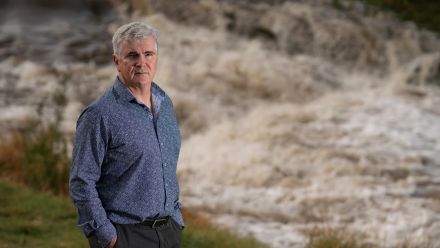How plants can inspire new ways to extract value from waste
The world’s wastewater contains a jumbled mess of resources that are incredibly valuable, but only in their pure form.
Scientists from The Australian National University (ANU) are drawing inspiration from plants to develop new techniques to separate and extract valuable minerals, metals and nutrientsfromresource-rich wastewater.
The ANU researchers are adaptingplant 'membrane separation mechanisms'so they can be embedded in new wastewater recycling technologies. Thisapproach offers a sustainable solution to help manage the resources required for the world's food, energy and water security by providing a way to harvest, recycle and reuse valuablemetal, mineral and nutrient resources from liquid wastes.
The technology could benefit a range of industries such asagriculture,aquaculture, desalination, battery recyclingand mining. It could also help companies rethink their approach to how they deal with waste by creating a way to extract value from wastewater.The research also has implications for flood- and drought-prone areas across Australia.
It'sestimatedglobal wastewater contains three million metric tonnes of phosphorus, 16.6 million metric tonnes of nitrogen and 6.3 million metric tonnes of potassium. The recovery of these nutrients from wastewater could offset 13.4 per cent of global agricultural demand for these resources.
The ammonia and hydrogen molecules, among others, that areembedded in wastewater could provide electricity to 158 million households.
"The world's wastewater contains a jumbled mess of resources that are incredibly valuable, but only in their pure form. A big challenge researchersface is figuring out how to efficiently extract these valuableminerals, metals and nutrients while retaining their purity," ANU plant scientistAssociate Professor Caitlin Byrt said.
"The Australian mining industry for example creates more than 500 million tonnes of waste per year, and these wastesare rich in resources like copper, lithium and iron. Butat the momentthe liquid waste is just a problem; itcan't be dumped and it can't be used. It's just waste unless each resource can be separated out in a pure form.
"This is particularly the case in the battery recycling space; you have this huge, rich source of lithium inside dead batteries, but we can't yet extract or reuse it efficiently. Harvesting resources from industrial and urban waste is a key step towards transitioning to a circular green economy and building a sustainable future, as well as reducing our carbon footprint."
The researchers investigated thespecialisedmolecular mechanisms that help plants recognise and separate different metal, mineral and nutrient molecules contained in soil, allowing them to sort the good from the bad - an essential biological process necessary for their growth and development.
"Resources such as boron, iron, lithium and phosphorus are used in battery technologies and plants are masters at separating these types of resources," Associate Professor Byrtsaid.
Ammonia, a compound used to create fertiliser and an essential materialin crop production, is another key resourcescientists are looking to extract from liquid waste solutions.
"Fertiliser costs are going through the roof, which puts a lot of pressure on Australian farmers to be able to afford these higher prices and yet we're wasting huge proportions of these molecules and that's causing environmental problems," Associate Professor Byrt said.
"Ammonia is also a critical storage molecule for hydrogen fuels. So, as we continue to develop hydrogen fuel industries, there will be an increase in demand for ammonia for use as a storage molecule, because that's how the hydrogen fuel industry will be able to transport the stored hydrogen around and ultimately use it as a potential fuel source for fuelling cars and other technologies."
Associate Professor Byrt said advances inprecision separation technology could also offer security to flood- and drought-prone communities across Australia by providing them with portable, secure and reliable access to clean drinking water in the face of worsening weather events as a result of climate change.
"Clean water and the security of nutrient resources underpin agricultural productivity. Development of technologies to sustainably manage these resources is essential for food security in Australia and globally," she said.
The research is published in New Phytologist.
For Journalists
- MEDIA TEAM CONTACTGeorge Booth+61 2 6125 7979


